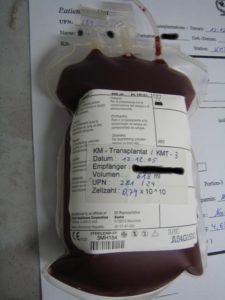
Diagnosed with Cancer? Your two greatest challenges are understanding cancer and understanding possible side effects from chemo and radiation. Knowledge is Power!
Learn about conventional, complementary, and integrative therapies.
Dealing with treatment side effects? Learn about evidence-based therapies to alleviate your symptoms.
Click the orange button to the right to learn more.
- You are here:
- Home »
- Blog »
- Multiple Myeloma »
- Multiple Myeloma Diagnosis- Too Old for Stem Cell Transplant?
Multiple Myeloma Diagnosis- Too Old for Stem Cell Transplant?

“multiple myeloma patients aged 70 years or older undergoing autologous stem cell transplantation have better progression-free survival but no difference in OS compared to patients who do not undergo ASCT”
Hi David- I just turned 73 and have received a multiple myeloma diagnosis. I have gone through induction therapy and I am now in remission. I have just ended all chemo and will be tested in two weeks to see if I am a candidate for stem cell transplant.
I have just stopped Revlimid and am having a rash on approx 30% of my body. I am healthy except for a lung condition which is a nontuburculosis bacteria.
I was not being treated for that condition until I was diagnosed with MM. I now take two antibiotics a day. I am short of breath when walking for exercise and my MM doctor does not think MM is causing the shortness of breath so I assume it is caused by the lung bacteria.
If If my doctor feels that I am a candidate for stem cell they plan to harvest stem cells at the end of Feb. The current plan is to postpone stem cell transplant until early summer because of COVID.
I am conflicted regarding whether or not to proceed with the stem cell. If I am a candidate I am considering harvesting stem cells and evaluating my decision while waiting for early summer.
In your opinion is 73 too old to receive a stem cell transplant? The dr has told me that there are now many other drugs and stem cell is not the only way to proceed, but he has not discouraged stem cell transplant at this point. I am a plant pathologist and understand research so I am open to options. Please advise. Don
Hi Don-
You’ve mentioned a number of issues so I will excerpt your post and address your questions.
- “I have gone through induction therapy and I am now in remission. I have just ended all chemo and will be tested in two weeks to see if I am a candidate for stem cell transplant.”
Achieving remission after induction therapy is a great start. If you think of it, please let me know what stage of remission you are in
2) “I have just stopped Revlimid and am having a rash on approx 30% of my body.”
Skin rash is a common side effect of Revlimid therapy. Hopefully, discontinuing Revlimid will be enough for the rash to resolve. Ask your oncologist.
3) “I am short of breath when walking for exercise and my MM doctor does not think MM is causing the shortness of breath so I assume it is caused by the lung bacteria.”
It is possible that your induction therapy has caused myelosuppression which is causing your shortness of breath. Your bloodwork, red, white blood cells, platelet, levels will give you insight.
4) “If If my doctor feels that I am a candidate for stem cell they plan to harvest stem cells at the end of Feb.”
Harvesting your stem cells, regardless if you think you will have an ASCT or not, is a good idea. Your MM should be at a low point.
5) “In your opinion is 73 too old to receive a stem cell transplant. The dr has told me that there are now many other drugs and stem cell is not the only way to proceed, but he has not discouraged stem cell transplant at this point.”
The question is not if you are too old for an ASCT Dean. The question is what therapy plan will work best for you and your goals.
Research shows that ASCT is a lot of toxicity aka causes short, long-term, late stage side effects considering the overall survival (length of life) you will gain.
To look at this another way, your doctor is saying that novel therapies will produce less toxicity while enhancing length of life.
This is based on studies of course, and depends on your goals, your thinking.
My recommendation is for you to take things one step at a time. See where you are remission-wise, see if your skin rash resolves, see if you’ve sustained myelosuppression, and then, based on this, determine your next therapy steps.
Your call of course but I would be interested in communicating with you again after you’ve determined your response, side effects, etc.
To Learn More about Partial, Stable, Progressive Response to Myeloma Treatment- click now
Let me know if you have any questions. Hang in there,
David Emerson
- MM Survivor
- MM Cancer Coach
- Director PeopleBeatingCancer
Recommended Reading:
- Arrhythmias (Afib) Caused by Stem Cell Transplants
- Multiple Myeloma Response-CR or VGPR- NO Difference
- Multiple Myeloma Diet- Foods vs. Supplements
Multiple Myeloma Remission
“There are various levels of response patients can have to treatment:
Stable Disease (SD)
Stable Disease is when a patient has had some response to treatment but less than 50% reduction in monoclonal protein levels. Their disease is not improving or getting worse.
Partial Response (PR)
Partial Response is when a patient has had over a 50% reduction in their blood monoclonal protein and a reduction of M-protein in the urine of over 90%. If a patient had a plasmacytoma (a single lesion), a partial response would mean over a 50% reduction in tumor size.
Very Good Partial Response (VGPR)
A Very Good Partial Response means that the monoclonal protein levels can be detected by the IFE (immunofixation test), but not by the electrophoresis test in the blood and urine. It also means that the M-protein has been reduced in the blood by over 90%.
Complete Response
A Complete Response means that there is no detectable monoclonal protein in the body.
Stringent Complete Response
Stringent Complete Response means that a patient has achieved a Complete Response and they also have a normal free light chain ratio and have no clonal cells in the bone marrow as measured by immunohistochemistry or immunoflourescence.
Minimal Residual Disease Negative
More sensitive testing is available that can detect lower levels of disease either by flow cytometry or by Next Generation Sequencing testing. If a patient is MRD negative, it means they have achieved a Stringent Complete Response and no myeloma cells can be detected in a sample of a million. This is a bone marrow biopsy test.
Risk of rash associated with lenalidomide in cancer patients: a systematic review of the literature and meta-analysis
“Lenalidomide is indicated for treatment of multiple myeloma in combination with dexamethasone and as a single agent in myelodysplastic syndromes. The incidence and risk of rash has been inconsistently reported.
Materials and methods: We conducted a systematic review and metaanalysis of the literature to determine the incidence and risk of developing rash. Relevant studies were identified from PubMed and abstracts presented at American Society of Clinical Oncology annual meetings. Incidence, relative risk, and 95% confidence intervals were calculated.
Results: Ten trials were available for analysis, and the overall incidence of all-grade and high-grade rash was 27.2% and 3.6%, respectively. Lenalidomide was associated with increased risk of all-grade rash (P < .001).
Conclusion: Further studies for prevention and treatment of this toxicity are needed to minimize effect on quality of life and dose intensity…”


